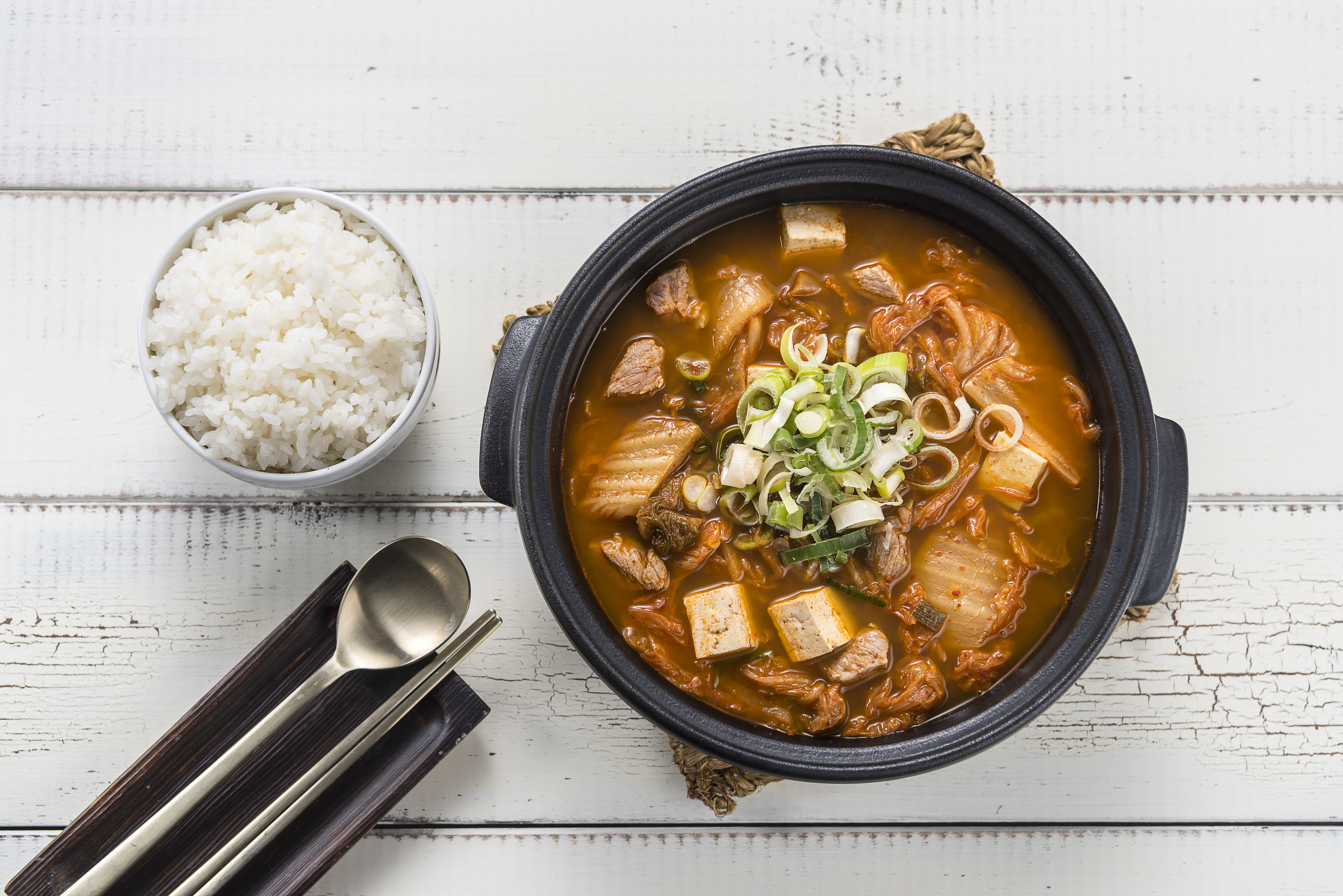Kimchi Jjigae
Written by Joe Wabe
Warm, spicy, meaty, and smoky – this is the best way I can describe this signature Korean dish. For many years it has been one of my favorites for weather that is cold, cool, warm, and hot. Korea is a very seasonal food place, as many dishes go well with the time of year; however, when I think of kimchi jjigae (kimchi stew), I strongly believe this is a dish to enjoy all year round.
It is assumed that this spicy stew was born sometime during the Joseon Dynasty (1392-1910) when red chili peppers were first introduced to Korea. This dish has two main variations, the tuna version and the one most commonly eaten in restaurants: the pork version.
My favorite way to enjoy it is with simple steamed white rice, steamed eggs, and kim (dried laver). It is a lifesaver after a night out, and a delicious dish to have for lunch.
The first time I made this soup, I made it my own way by figuring out the taste, and it was not bad. It passed the test with friends and family. Through the years, I have found that most people have their own recipe – some simpler, some more complex – but at the end of the day, what they all have in common is the base: kimchi and pork (or tuna).
So here is my recipe, the one I have molded and perfected over more than a decade. This is just a basic map, so you can make changes that suit your palate. The best way to get a good recipe is to do it your way.
Ingredients (serves 2-4 people)
• kimchi cut into pieces
• ½ pound (225 grams) of pork belly or shoulder
• 1 block of tofu cubed into pieces
• 1 green onion
• 1 medium onion, sliced
• 1 teaspoon of sugar
• 2 teaspoons of Korean hot pepper flakes
• 1 or 2 tablespoons of Korean red pepper paste
(depending on desired spiciness)
• 1 teaspoon of sesame oil
• 4 tablespoons of anchovy stock
• ½ cup of mirin (a Japanese rice wine)
• 4 cups (1 liter) of water
Preparation
First, put the pork and mirin together in a container, and let them rest for ten minutes. The rice wine will get rid of the meat smell and will prepare the pork for the dance.
Add these to a pot and turn on to medium heat, then add the sesame oil and sauté the pork for about four minutes. Next, add the kimchi and onions, still at medium temperature, for about seven minutes. Do not let it burn or get too dry, since the purpose is to get these flavors together in a smoky way. The next step is to add water and put on a lid, allowing the stew to get to a boiling point. Next, add the red pepper paste and powder along with the anchovy stock, and let it all boil for another six minutes. This combination will give the stew its base taste. If you feel the taste is not strong enough, feel free to add a bit of salt.
Now it is time to soften the taste and give it the final stroke. Add the tofu, green onions, and sugar, and lower the heat to a minimum, with the lid on, for about five more minutes, and then turn it off. Let it sit for another five minutes before serving to allow the heat to settle and all flavors to consolidate.
This recipe is a winner! If you choose tuna instead of pork, follow the same directions, but instead of adding the tuna at the beginning, you will want to add it after adding the water and bringing it to a boil. Have fun!
The Author
Joe Wabe is an established photographer and Gwangju local business entrepreneur. He has been contributing to the GIC and the Gwangju News for more than eight years.





